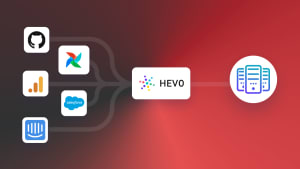

In our case, we want task_2 to run after task_1: task_1.set_downstream(task_2) Running the DAGīy default, DAGs should be placed in the ~/airflow/dags folder. Lastly, we just need to specify the dependencies. The next step consists of defining the tasks of our DAG: task_1 = BashOperator(

The first parameter “first_dag” represents the DAG’s ID, and the schedule interval represents the interval between two runs of our DAG. The DAG itself can then be instantiated as follows: my_first_dag = DAG( For example, we can easily define the number of retries and the retry delay for the DAG’s runs. # initializing the default arguments that we'll pass to our DAGĪs we can see, Airflow offers a big number of default arguments that make DAG configuration even simpler. These arguments will then be applied to all of the DAG’s operators. We can then define a dictionary containing the default arguments that we want to pass to our DAG. # We need to import the operators used in our tasksįrom _operator import BashOperator To create our first DAG, let’s first start by importing the necessary modules: # We'll start by importing the DAG object For example, using PythonOperator to define a task means that the task will consist of running Python code. What each task does is determined by the task’s operator. In Airflow, a DAG is simply a Python script that contains a set of tasks and their dependencies. One of these concepts is the usage of DAGs, which allows Airflow to organize the multiple tasks and processes that it needs to run very fluidly. In a previous article on INVIVOO’s blog, we presented the main concepts that Airflow relies on. To initiate the database, you only need to run the following command: airflow initdb Creating your first DAG

The recommended option is to start with Airflow’s own SQLite database, but you can also connect it to another option.
Airflow dag trigger another dag install#
So if we opt to add the Microsoft Azure subpackage, the command would be as follows: pip install 'apache-airflow'Īfterward, you only need to initiate a database for Airflow to store its own data. Installing AirflowĪirflow’s ease-of-use starts right from the installation process because it only requires one pip command to get all of its components: pip install apache-airflowĪdding external packages to support certain features (like compatibility with your cloud provider) is also a seamless operation. This article will guide you through the first steps with Apache Airflow towards the creation of your first Directed Acyclic Graph (DAG). One of the main reasons for which Airflow rapidly became this popular is its simplicity and how easy it is to get it up and running. Since they receive the parameters from an external source, will they keep the same parameters when they will be reprocessed? To check that, I cleaned the state of one of the executions of hello_world_a.Throughout the past few years, Apache Airflow has established itself as the go-to data workflow management tool within any modern tech ecosystem. So, if you have some problems in your logic and restart the pipeline, you won't see already processed messages again - unless you will never retry the router tasks and only reprocess triggered DAGs which in this context could be an acceptable trade-off.Īnother point to analyze related to replayability concerns externally triggered DAGs. First, our "router" DAG is not idempotent - the input always changes because of non-deterministic character of RabbitMQ queue. That's why I will also try the solution with an external API call.Īside from the scalability, there are some logical problems with this solution. Hence, if you want to trigger the DAG in the response of the given event as soon as it happens, you may be a little bit deceived. It works but as you can imagine, the frequency of publishing messages is much higher than consuming them. In the following image you can see how the routing DAG behaved after executing the code: Python_callable=trigger_dag_with_context, You can find an example in the following snippet that I will use later in the demo code: In order to enable this feature, you must set the trigger property of your DAG to None. But it can also be executed only on demand. External triggerĪpache Airflow DAG can be triggered at regular interval, with a classical CRON expression.
Airflow dag trigger another dag code#
The second one provides a code that will trigger the jobs based on a queue external to the orchestration framework. The first describes the external trigger feature in Apache Airflow.


 0 kommentar(er)
0 kommentar(er)
